Back to Industry Program Page >>
All times in local Taipei time.
TUESDAY, 8 DECEMBER 2020
14:00-17:30
Industry Tutorial 1 (IT-01, Live): Toward Intelligent and Open RAN- from Vision to Reality
Industry Tutorial 2 (IT-02, Live): 6G: What Do We Know So Far?
Industry Tutorial 3 (IT-03, Live): Cyber Security Practice of Industrial Control System
Industry Tutorial 4 (IT-04, Live): The InterPlanetary File System and the Filecoin Network
WEDNESDAY, 9 DECEMBER 2020
THURSDAY, 10 DECEMBER 2020
Date/Time: 8 December 2020, Tuesday: 14:00-17:30
Room: TICC R103
Organizer/Speaker(s) of Tutorial
Dr. Jhih-Heng Yan, Researcher, Chunghwa Telecom Laboratories, Taiwan
Mr. Yu-An Chen, Researcher, Chunghwa Telecom Laboratories, Taiwan
Mr. Po-Chun Lai, Manager, Nvidia, USA
Wes McCoy, Chief Wireless Systems Engineer, USA
Motivation and Scope of Tutorial
5G network is expected to be the platform catering the requirements and business needs of a verity of vertical. A key challenge for the more complex and flexible 5G network results from the scale and flexibility of deployment, optimization, management and orchestration of the network. An open, multi-vendor interoperable ecosystem driving healthier competition, lowering costs for RAN equipment, and delivering a much larger pool of vendors. However, there is still a lot issue in deploying and operating this kind of RAN. Furthermore, manually management to deliver new services and managing RAN capacity will no longer be practical. Intelligence and automation must be integrated into all aspects of the network lifecycle to reduce both CAPEX and OPEX. There are several operator-led industry initiatives such as the O-RAN Alliance that aims to generically create an open RAN ecosystem. This tutorial addresses challenges, key technologies, and current status of open RAN in the aspect of openness and intelligence.
Biographies of Organizers/Speakers
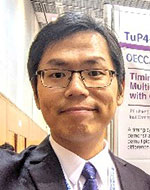 Jhih-Heng Yan
Jhih-Heng Yan
Jhih-Heng Yan received his Ph.D. degree in electrical engineering from National Tsing Hua University, Taiwan. He was a visiting scholar with Georgia Institutes of Technology and a postdoctoral research fellow with National Tsing Hua University. He currently works at Chunghwa Telecom Laboratories in Taiwan as a Researcher and participates in major standardization forums toward innovative optical networks and technologies. His major research interests are optical access and transport networks, fiber-wireless integrated systems, and 5G RF/MMW mobile communications
Yu-An Chen
Yu-An Chen works at Chunghwa Telecom Laboratories in Taiwan as a Researcher. His major research interests are AI/ML technologies in mobile communications, especially for topics that related AI/ML model within optimal control aspect in communications.
 Po-Chun Lai
Po-Chun Lai
Po-Chun Lai is NVIDIA DevRel-AI Alliance Manager. He focuses on communicating and sharing development experience with developers about NVIDIA new technologies adoption. Before joining NVIDIA, he had been working for TSMC, ITRI for enterprise software system development and research. He has rich experiences about enterprise application, HPC/AI development and software development model such as Agile development, Scrum and DevOps.
Wes McCoy
Wes McCoy is a 10-year NI veteran and a 25 year wireless industry veteran. He and is responsible for leading a virtual 3GPP standards team of many excellent engineers. He is very skilled at standards essential IP strategy and development and patenting in general and is a named inventor on over 80 US patents. He has worked on wireless technologies from pagers and cell phones to trunked radio and wireless chip sets. He has been substantially involved in 3GPP RAN1 standards from Release 8 until now.
Industry Tutorial 2 (IT-02, Live): 6G: What do we know so far?
Date/Time: 8 December 2020, Tuesday: 14:00-17:30
Room: TICC 3F North Lounge
Organizer/Speaker(s) of Tutorial
Sudhir Dixit, Co-Founder, Basic Internet Foundation, Norway & Adjunct Professor, University of Oulu, Finland
Simon Fletcher, CTO, Real Wireless, UK
Nigel Jefferies, Senior Manager, Huawei Technologies & Chairman, Wireless World Research Forum, UK
Motivation and Scope of Tutorial
There’s a lot of discussion about 6G and systems beyond 5G more generally. However, it’s hard to get a clear picture of what is happening now to develop the vision and requirements for such systems, who the leading players are, and which technologies and innovations are likely to play a key role. Even more vital is to understand the business environment in which these systems will play a part, the likely demand and the evolution of the current supply chain. This tutorial will give participants an up-to-the-minute picture of the state of play, and leave them able to place discussions on specific technologies in context.
Biographies of Organizers/Speakers
 Sudhir Dixit
Sudhir Dixit
Sudhir is a Co-Founder, Senior Fellow and Evangelist at the Basic Internet Foundation in Oslo, Norway, and heads its US operations. He is also associated with the Academy of Finland Flagship Programme, 6Genesis, led by the Centre for Wireless Communications, University of Oulu, Finland. From 2015 to 2017 he was the CEO and Co-Founder of a start-up, Skydoot, Inc. From 2009 to 2015, he was a Distinguished Chief Technologist and CTO of the Communications and Media Services for the Americas Region of Hewlett-Packard Enterprise Services in Palo Alto, CA, and the Director of Hewlett-Packard Labs India in Palo Alto and Bangalore. Before joining HP, he held various leadership positions at BlackBerry, Nokia, NSN and Verizon Communications.
He has been a technical editor of IEEE Communications Magazine, and is presently a Board Member & Working Group Chair at the Wireless World Research Forum (WWRF). He is also the Vice Chair for Americas at the WWRF. He is on the editorial boards of IEEE Spectrum Magazine and Springer’s Wireless Personal Communications Journal. He is a Co-Chair of the Industry Engagement Committee of the IEEE Future Network Initiative and is on its Industry Outreach Board (IOB). In 2018, he was appointed a Distinguished Lecturer by the IEEE Communications Society. From 2010 to 2012, he was an Adjunct Professor of Computer Science at the University of California, Davis, and, since 2010, he has been a Docent at the University of Oulu, Finland. He has published 8 books by Wiley, Artech House and Springer. A Life Fellow of the IEEE, Fellow of IET and IETE, Dixit holds a Ph.D. from the University of Strathclyde, Glasgow, U.K. and an M.B.A. from the Florida Institute of Technology, Melbourne, Florida.
 Simon Fletcher
Simon Fletcher
Simon takes responsibility for overall technical and innovation strategy at Real Wireless. He is co-Chair of the International Engagement Working Group in the UK5G Advisory Board and a Board member of WWRF.
Simon has spent over 20 years working in global product development and telecoms infrastructure systems. In NEC Corporation he played a key role in the formation of Joint Ventures for the development of 3G and 4G products and establishing Core Teams targeting new product development. He represented NEC Corporation in industry eco-system forums during early commercial product launches and directed projects addressing future cities, and the application of 5G and IoT in industry verticals. Simon directs strategic Real Wireless including EC H2020 project engagements and is a Director of mVCE, a research collaboration between Universities and Industry in the UK and which is already exploring the “Beyond 5G” agenda. He has acted as consortium Innovation Manager for a project that pioneered development of 5G network slicing and cloud architectures and currently leads the Business Models and industry engagement activities for the 5G-TOURS project which covers the application of 5G in Tourism, Health and Transport sectors. He led a UK strategic study on Future Communications infrastructure use cases and costs for the UKs National Infrastructure Commission, and manages new product and service development for Real Wireless through projects in the UK, Europe and beyond. Multi-disciplinary projects are typically focussed on network economics and dimensioning, commercial case analysis grounded in techno-economics, utilising in-house software tools and consulting expertise.
 Nigel Jefferies
Nigel Jefferies
Nigel Jefferies is a senior consultant with Huawei Technologies and Chairman of the Wireless World Research Forum, a global partnership between industry and academia to develop a research agenda for mobile communications. Previously he was Head of Academic Relationships within Vodafone Group Research & Development and a Principal Mathematician at Racal Research Ltd. In the past he led the European-funded IST project SHAMAN, which studied the security of future mobile systems, and ran the Secure Applications Steering Group for Mobile VCE. Other collaborative research projects on various aspects of security for mobile communications include 3GS3 in the UK-funded LINK programme, and ASPeCT and USECA in the European ACTS programme. His research interests include cryptography, security of systems and applications of mathematics to telecommunications. He received a PhD in functional analysis from Goldsmith's College, London, and an MA in mathematics from the Queen's College, Oxford, and is a visiting professor at Kingston University. He is a Fellow of the Institute of Mathematics and its Applications and a Chartered Mathematician.
Industry Tutorial 3 (IT-03, Live): Cyber Security Practice of Industrial Control System
Date/Time: 8 December 2020, Tuesday: 14:00-17:30
Room: TICC 3F South Lounge
Organizer/Speaker(s) of Tutorial
Chih-Ta Lin, Technical Director, Institute for Information Industry, Taiwan
Chih-Fang Mao, Technical Manager, Institute for Information Industry, Taiwan
Ding-Jie Huang, Section Manager, Institute for Information Industry, Taiwan
Mei-Lin Lee, Project Manager, Institute for Information Industry, Taiwan
Yu-Ting Tsou, Technical Manager, Institute for Information Industry, Taiwan
Motivation and Scope of Tutorial
The industry tutorial is aimed at providing to the attendees’ practical skills in cyber security of ICS, which is at the basis of critical infrastructure. Through this practical tutorial the attendees will learn the background knowledge about ICS (Industrial Control System) and its corresponding security issues. All attendees will be able to participate to the hands-on activities and learn practical skills directly during the session by using their own laptops. Furthermore, attendees can experience the technology of cyber defense for ICS and strengthen the awareness about critical infrastructure protection, intelligent manufacturing protection, and vulnerability protection.
Biographies of Organizers/Speakers
 Chih-Ta Lin
Chih-Ta Lin
Chih-Ta Lin is currently the Technical Director of the Cybersecurity Technology Institute at Institute for Information Industry. He obtained a Ph.D. in electrical engineering from National Taiwan University of Science and Technology, and received his Master degree in chemical engineering from Taiwan University. He visited and researched at the Department of Informatics at the Technische Universität München for one year. His research focuses on ICS cyber security, intrusion detection system in OT, process control, cyber attack & defense, malware behavior analysis, AI & big data security analysis, IAM & data protection.
 Chih-Fang Mao
Chih-Fang Mao
Chih-Fang Mao received his Master degree in Department of Information Management from Yuan Ze University, Taiwan. Currently, he is major job is promoting intrusion detection system in industrial control system,and also doing government CIIP PoC project ,which using IDS in CPC, Taipower and Taiwater company from 2017 until now.
 Ding-Jie Huang
Ding-Jie Huang
Ding-Jie Huang received his Ph.D degree in Department of Computer Science and Information Engineering from National Taiwan University of Science and Technology, Taiwan. His previous research interests included the security issue and time synchronization protocol in wireless sensor network. In addition, he also conducted research about the turning gait and walking bias detection for quadruped robot. He is currently employed as section manager in Institute for Information Industry. His previous job is to conduct research about the technology for IoT (Internet of Things), including LoraWAN, Security mechanism, and MTC (Machine Type Communication). Besides, he also joined several projects to develop disaster prevention system. Currently, he is major job is on developing intrusion detection techniques for industrial control system.
 Mei-Lin Lee
Mei-Lin Lee
Mei-Lin Lee completed her master’s degree in Department of Computer Science and Information Engineering from National Taiwan University of Science and Technology, Taiwan. She was mainly responsible for security assessment and provide solutions to help customers identify threats, vulnerabilities, and potential attacks. She joined projects to implement information security vulnerability assessment including enterprises’ information security regulations into end-user’s platform as well as regularly manage risks through automatic auditing. Furthermore, she also developed two-factor identity authentication system by using QR codes. Her focuses specifically on research about the intrusion detection techniques for industrial control system recently.
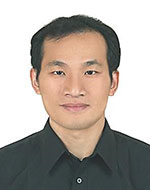 Yu-Ting Tsou
Yu-Ting Tsou
Yu-Ting Tsou received a master's degree from the Institute of Electrical Engineering, Chung Yuan Christian University. His main research is about the autonomous load balancing scheme on MAP (Mobile Anchor Point). He also proposed a mobility management scheme based on the communication status for reduction of Active-BU traffic in Hierarchical Mobile networks. He is currently working as a technical manager in Institute for Information Industry. He has studied the analysis of electricity consumption behavior and used demand response to determine the electricity consumption equipment. He also proposed a method that uses excessive power consumption to determine the power threshold and unloads the device when the power threshold is exceeded.
Industry Tutorial 4 (IT-04, Live): The InterPlanetary File System and the Filecoin Network
Date/Time: 8 December 2020, Tuesday: 14:00-17:30
Room: TICC 4F Joy Lounge
Organizer/Speaker(s) of Tutorial
Yiannis Psaras, Research Scientist, Protocol Labs, UK
David Dias, Research Engineer, Protocol Labs, Portugal
Alfonso de la Rocha
Motivation and Scope of Tutorial
Introduction: The InterPlanetary File System (IPFS) is a peer-to-peer content-addressable distributed file system that seeks to connect all computing devices with the same system of files. It is an open-source community-driven project, supported by Protocol Labs with reference implementations in Go and Javascript, and a global community of millions of users.
IPFS resembles past and present efforts to build and deploy content-centric approaches to content storage, resolution, distribution and delivery. IPFS and libp2p, which is the modular network stack of IPFS, are based on name-resolution based routing. The resolution system is based on Kademlia DHT and content is addressed by flat hash-based names. IPFS sees significant real-world usage, with tens of companies building on top of its set of protocols, over 250,000 daily active network nodes, millions of end users and wide adoption by several other projects in the Decentralised Web space, but not only.
An adjacent project to IPFS, which was also masterminded and is being developed within Protocol Labs is Filecoin. Filecoin is a protocol token that supports a decentralised storage and delivery network. Storage and retrieval miners are rewarded according to their contribution to the network and the mechanics of Filecoin secure the network against malicious activity.
The objective of this half-day tutorial is to make the audience familiar with IPFS and Filecoin and able to use the tools provided by the project for research and development. The tutorial targets both developers and researchers, who may contribute to the project or use it as a tool.
Motivation for this Tutorial: IPFS and libp2p are becoming the de facto standard for data storage in the Decentralised Web and, as such, they are being used by a vast number of projects and initiatives in this space, including the Ethereum platform. The basic principles and core components of the IPFS protocol stack have their roots in academic research and are therefore deeply linked with the academic world. We believe that it will be beneficial for the audience of IEEE GLOBECOM, a conference traditionally interested in fundamental principles and protocols in the area of networking, to become aware of the nitty gritty details of the protocols and the features supported. As the one of the first decentralised storage networks, efficient and robust operation is critical to Filecoin. For this, input and feedback from the academic community is of utmost importance for the project at this point in time.
The attendees do not need to have prior knowledge of IPFS, libp2p or Filecoin and basic knowledge and understanding of core networking and network security principles will be sufficient in order to follow along.
Biographies of Organizers/Speakers
 Yiannis Psaras
Yiannis Psaras
Dr. Yiannis Psaras is a Research Scientist at Protocol Labs. He is heavily involved in identifying the future research directions for IPFS and libp2p, especially with regard to the limitations that current versions of the protocols are expected to face.
Before joining Protocol Labs, he was an EPSRC Fellow and University Lecturer (Assistant Professor) at University College London. For the past decade he has been interested in areas related to resource management techniques for current and future networking architectures with particular focus on routing, caching and congestion control. Over the last few years he has focused on function-centric networks to realise distributed and decentralised edge computing, also referred to as “computing in the network”. He held a prestigious EPSRC Early Career Fellowship (2015-2020) in the area of “decentralized content-oriented and service-centric edge-computing architectures”. He has been heavily involved in the effort to shift the Internet towards an Information-Centric Networking environment, which he is now materializing through his contribution to the IPFS Ecosystem.
Dr. Psaras has received five (5) Best Paper Awards for his work and has attracted more than £2.5M in research funding to date from the Engineering and Physical Sciences Research Council (EPSRC, UK), the EU FP7/H2020 framework programmes and from Innovate UK.
 David Dias
David Dias
David Dias is a Peer-2-Peer Software Engineer at Protocol Labs, (Palo Alto, CA and Lisbon, Portugal), doing software engineering and research, developing protocols to upgrade the web. Previously David worked at &yet where he had the chance to collaborate with all types of teams, helping them ship better secure software by auditing web applications and delivering hands on training in Node.js application security and also how to use WebRTC. He has also done Research at the Distributed Systems Group at INESC-ID Lisboa, later becoming an Invited Lecturer and creating the "Modern Web Development" course (from scratch). Passionate about technology, has served IEEE, Google and Kairos, organizing several events and conferences, and even starting his own online events with the Lisbon JavaScript Conference (2012, 2013 and 2014) and Startup Scholarship.
 Alfonso de la Rocha
Alfonso de la Rocha
Industry Tutorial 5 (IT-05, Live): 6G Industry Verticals: Connected and Autonomous Vehicle Technologies for Future Driving Paradigms
Date/Time: 9 December 2020, Wednesday: 11:00-12:30
Room: TICC R103
Organizer/Speaker(s) of Tutorial
Shih-Chun Lin, Assistant Professor, Department of Electrical and Computer Engineering, North Carolina State University, USA
Motivation and Scope of Tutorial
Connected autonomous vehicles (CAVs) emerge as one major paradigm shift of 6G industry verticals in the autonomous driving and human society while introducing more technological challenges in wireless network infrastructures and deployment. As the technology for a single autonomous vehicle becomes mature, real challenges come from the reliable, safe, real-time operation of connected transportation to achieve ubiquitous and prompt information exchanges with massive CAVs. Vehicles may also exchange their perception data or maneuver plans with other cars or acquire information from remote cloud servers or road-site units through the advance of vehicle-to-everything (V2X) technologies. Since August 2018, 3GPP has launched the normative works of New Radio V2X and enhanced ultra-reliable and low latency communication in 3GPP Release 16. By December 2019, the 3GPP RAN Plenary meeting approved 24 new projects for 3GPP Release-17 with one primary focus of bringing sidelink capabilities from automotive to smartphones and public safety.
This industrial tutorial will present emerging key aspects of ultra-low latency vehicular network architecture and discuss intelligent transportation systems' latest industrial practice. The talk will cover state-of-the-art research progresses in CAV and V2X areas, technological deployment efforts by the 3GPP Cellular V2X with SAE-levels, IEEE DSRC/WAVE, and ITU-T, and the real-world implementation of CAV infrastructure in North Carolina by the NC-CAV center and North Carolina Department of Transportation.
Biographies of Organizer/Speaker
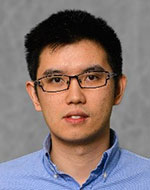 Shih-Chun Lin
Shih-Chun Lin
Shih-Chun Lin is an assistant professor with the Department of Electrical and Computer Engineering at North Carolina State University, where he leads the Intelligent Wireless Networking Laboratory. He received a Ph.D. degree in electrical and computer engineering from Georgia Institute of Technology, Atlanta, USA, in 2017, and an M.S. degree in communication engineering and a B.S. degree in electrical engineering from National Taiwan University, Taiwan. He has published more than 40 peer-reviewed papers, holds 10 U.S. patents, and received the Best Student Paper Award Runner-up in IEEE SCC 2016. He serves as a TPC member for numerous international conferences, including IEEE INFOCOM, IEEE ICC, IEEE GLOBECOM, IEEE WCNC, and IEEE VTC, and received the Distinguished TPC Member Award in IEEE INFOCOM 2020. He has been invited as a tutorial speaker in IEEE GLOBECOM 2020 and IEEE ICC 2019 for delivering Ultra-Low Latency Vehicular Networking and Connected Transportation. Being a pioneer of software-defined networking, he has also been invited to demonstrate AI-based RF analytic with SDR-SDN architecture in 2019 Beyond 5G SDR University Showcase by AFRL. He currently leads a low-latency edge computing project for connected and autonomous vehicle deployment by NCDOT and a distributed machine learning project funded by Cisco. His research interests include 5G and beyond, wireless software-defined architecture, vehicular edge computing and the artificial intelligence of things, machine learning and mathematical optimization, statistical scheduling and traffic engineering, and performance evaluation.
Industry Tutorial 6 (IT-06, On demand): Edge Computing technologies for V2X: from standards to actual industry adoption
Date/Time: 10 December 2020, Thursday: 09:00-17:30
Organizer/Speaker(s) of Tutorial
Organizers:
Miltiadis Filippou, Senior Standards & Research Engineer, Intel, ETSI MEC Delegate
Dario Sabella, Senior Manager, Intel, ETSI MEC Vice-Chairman
Speakers:
Miltiadis Filippou, Senior Standards & Research Engineer, Intel, ETSI MEC Delegate
Dario Sabella, Senior Manager, Intel, ETSI MEC Vice-Chairman
Mustafa Emara, Researcher, Intel
Neal Oliver, Principal Engineer, Intel
Leifeng Ruan, Principal Engineer, Intel, Chairman of AECC WG2
Motivation and Scope of Tutorial
Given the growing importance of Edge Computing technologies for the 5G market, and its relevance for automotive domain applications, this Industry Tutorial will provide the latest technology insights on Edge Computing (from an industrial perspective), with special focus on Vehicular-to-Everything (V2X) applications. The aim is to first provide an edge computing technology overview, focusing on connected vehicles, from both standards (ETSI, 3GPP) and relevant Industry Association (5G Automotive Association (5GAA) & Automotive Edge Computing Consortium (AECC)) standpoints. Then, the tutorial will show how practical implementations of Edge Computing technology and collaboration with relevant stakeholders in demos and trials are enabling the market introduction for V2X applications and services. Finally, some performance evaluations, tailored to selected use cases of interest, and evolutionary aspects of Edge Computing technology towards distributed cloud will conclude the tutorial.
Biographies of Organizers/Speakers
 Miltiadis C. Filippou
Miltiadis C. Filippou
Senior Standards & Research Engineer, Intel
Dr. Miltiadis C. Filippou (S’12, M’15, SM’19) was born in Athens, Greece in 1984. He received his Dipl. Eng. degree in Electrical and Computer Engineering from the National Technical University of Athens (NTUA), Greece, in 2007 and his Ph.D. degree in Electronics and Telecommunications from Telecom ParisTech, France in 2014. Between 2014 and 2015, he was a Research Fellow at the Institute for Digital Communications (IDCOM), University of Edinburgh, U.K., and since 2015 he is a Senior Standards and Research Engineer of the Next Generation and Standards Group at Intel Deutschland GmbH in Neubiberg, Germany.
Dr. Filippou has authored and co-authored three book chapters and more than 40 technical papers, appearing in top notch IEEE journals and flagship conference proceedings (1450+ citations), was a co-recipient of the IEEE EuCNC’18 Best Student Paper Award, he has filed more than 70 patent applications, with several matters under consideration and he has been also awarded two Intel patent performance awards (2018/2019), as well as a Division Recognition Award in 2019. He has significant EU research project experience gained by contributing to and assuming leadership roles in various FP7 (SAPHYRE, ADEL), H2020/ 5G PPP (METIS-II, mmMAGIC, ONE5G) and French national ANR projects (LiCoRNe). Since 2017 he has been serving as a delegate and WI Rapporteur of ETSI ISG MEC, where, he has (co)-sourced more than 55 technical contributions accepted by the standard so far. Dr. Filippou is a Senior Member of the IEEE and a Member of the Technical Chamber of Greece.
His current research interests include: 5G and beyond network architecture, edge & distributed computing and machine learning for communications.
 Dario Sabella
Dario Sabella
ETSI MEC Vice-Chairman, Intel
Dario Sabella is working with Intel as Senior Manager on Research and Standards, acting also as company delegate of the 5GAA (5G Automotive Association). In his role within Next Generation Standards division, Dario is working on new technologies and edge cloud innovation for the new standard of communication networks, involved in ecosystem engagement and coordinating internal alignment on edge computing across SDOs and industry groups, in support of internal and external stakeholders/customers. In ETSI, he’s serving as MEC Secretary and Lead of Industry Groups, and previously from 2015 as Vice Chairman of ETSI MEC (Mobile Edge Computing) IEG. Prior to February 2017 he worked in TIM (Telecom Italia group), in the Wireless Access Innovation division, as responsible in various TIM research, experimental and operational activities on OFDMA technologies (WiMAX, LTE, 5G), cloud technologies (MEC) and energy efficiency (for energy saving in TIM’s mobile network). From 2006 he was involved in many international projects and technological trials with TIM’s subsidiary companies (ETECSA Cuba, TIM Brasil, Telecom Argentina). Since joining TIM in 2001, he has been involved in a wide range of internal and external projects (including FP7 and H2020 EU funded projects), often with leadership roles. Author of several publications (40+) and patents (20+) in the field of wireless communications, radio resource management, energy efficiency and edge computing, Dario has also organized several international workshops and conferences.
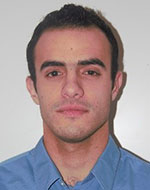 Mustafa Emara
Mustafa Emara
Researcher, Intel
Mustafa Emara is a Researcher at Next Generation and Standards, Intel Deutschland. He received his B.Sc. degree in communications engineering from the German University in Cairo (GUC) in 2014 and the M.Sc. from the Technical University in Munich in 2017. He is currently pursuing his Ph.D. at the Institute of Communications, Hamburg University of Technology. Prior to that he was with Fraunhofer Heinrich Hertz Institute, Nomor Research and Telefonica Deutschland as a student Researcher. He is the recipient of the Best Student Paper Award at the European Conference on Networks and Communications 2018. His research areas of interest include modeling of wireless communication systems, MEC, and queueing theory.
 Neal Oliver
Neal Oliver
Principal Engineer, Intel
Neal Oliver is a Principal Engineer in the Network Platforms Group at Intel, currently focusing on edge computing technologies for LTE and 5G networks. He works with commercial/government partners and customers to apply edge computing, acceleration, and network virtualization technologies in products and service deployments. In earlier roles in Intel, Neal was a lead architect on coherent memory FPGA platforms for high-performance/low-latency applications. He developed a novel co-simulation system to characterize the performance of link-level network processing in mobile base stations. Earlier, at Bell Labs, Neal was the lead architect for several parallel embedded computing platforms, targeted at radar, sonar, and AI/ML applications for the DoD and intelligence communities and at services in the telco network. Neal participates in several standards development organizations and open source communities, including ETSI, ECMA, GSMA, 5GAA, and Akraino. In these organizations he has made contributions to Network Functions Virtualization (NFV), Multiaccess Edge Computing (MEC), and open source blueprints, led the development of a core network benchmarking standard, and led the development of API standards for media processing in the telco network. Neal has published numerous papers in wireless networking, performance modeling, and reconfigurable computing, and has been awarded 16 US and foreign patents. He has presented papers and tech talks at a variety of technical and professional conferences. He earned a BS in Mathematics at Michigan State University, an MS in Computer Science at the University of Michigan, and a PhD in Computer Science at New York University.
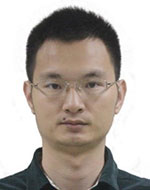 Leifeng Ruan
Leifeng Ruan
Principal Engineer, Intel, Chairman of AECC WG2
Leifeng Ruan is Intel Principal Engineer and Chairman of Automotive Edge Computing Consortium (AECC) Technical Solution WG, he has over 13 years of experiences in telecoms standardization and product development. The years in the telecoms product development have given him invaluable experiences of not only end to end wireless system level cutting-edge technologies covering Device, Edge to RAN and Cloud infrastructure, but also the best practice in bringing the standards (IEEE, 3GPP, ORAN, ETSI, CCSA) into real products.
Leifeng had leadership positions on various 3G, 4G, 5G and edge product development teams on delivering cellular products, conducting trials and deployment for operators. He has been granted 15+ patents, published 2 books and multiple papers on wireless and edge domain.
Industry Tutorial 7 (IT-07, Live): An Innovative 5G Private Network Solution and Versatile Vertical Applications
Date/Time: 10 December 2020, Thursday: 11:00-17:30
Room: TICC R103
Organizer/Speaker(s) of Tutorial
Dr. Ling-Chih Kao, Project Manager, Telecommunication Laboratories, Chunghwa Telecom Co., Ltd, Taiwan
Vincent Tsai, Managing Director at Enterprise Business Department, Chunghwa Telecom Mobile Business Group, Chunghwa Telecom Co., Ltd , Taiwan
CY Feng, GM of PEGA BU6, Pegatron Corporation
Willie Lin, Senior Product Manager, Advantech Co., Ltd
David Huang, Manager, Machine Vision department, Techman Robot Inc.
PoWen Tsai, Director of Business Development and Director Presales Engineer Division, Edgecore Networks
Motivation and Scope of Tutorial
With the advent of 5G, more and more opportunities are brought in; however, the challenges are also generated. How to conquer the challenges and make the most use of the opportunities introduced by 5G becomes an imperative mission for mobile operators. The applications of 5G are widespread, including Enhanced Mobile Broadband (eMBB), Ultra-reliable Low Latency Communications (URLLC) and massive Machine Type Communication (mMTC). Taking advantage of SDN/NFV/Cloud technology to swiftly and automatically manage resources and to decouple software from hardware is vital to help operator transform to be an intelligent and a digital one. Most importantly, mobile edge computing is the key enabler for operators to efficiently meet the requirements of high bandwidth and low latency services, and to differentiate operator from OTT. At the same time, many enterprises are eager for the 5G private network to meet the requirements of high bandwidth and low latency applications, and to enhance security.
In general, there are three kinds technologies to implement the 5G private network, comprising on-premises Multi-access Edge Computing (MEC), edge cloud, and dedicated core network. The on-premises MEC and dedicated core network are constructed at enterprise site and are thus suitable for small area applications, such as smart factory and smart healthcare. For the applications in large area, covering telemedicine, Internet of Vehicles (IoV) and on-line gaming, the edge cloud usually established at telecom room was served as the solution. The complete ecosystem of private network was composed of hardware, software, and applications. For Taiwan, taking advantage of the strong capability in hardware, software and versatile applications make it easy to prosper the ecosystem compared to other country in the world.
In this workshop, not only the tutorial of private network solution is covered, but also the live demonstration combining 5G MEC and related applications is also included. The possible solutions of private network are introduced where an innovative on-premises 5G MEC solution was emphasized, featuring with the capabilities of autonomously managing the versatile conditions of local breakout, setting up the allocated bandwidth, network accessibility, and used services based on time, location, and MSISDN. At the same time, the hardware of realizing MEC, including x86 server and SDN switch will be illustrated. Moreover, the applications of real-time data analysis and management of equipment effectiveness and energy, and robot arm with visual inspection combined with 5G MEC will also be portrayed and demonstrated.
Biographies of Organizers/Speakers
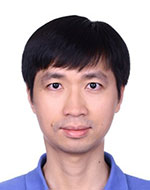 Ling-Chih Kao
Ling-Chih Kao
Telecommunication Laboratories, Chunghwa Telecom Co., Ltd, Taiwan
Dr. Ling-Chih Kao is a manager at Wireless Communications Laboratory of Chunghwa Telecom Laboratories, Chunghwa Telecom Co., Ltd., where he focuses on investigating and evaluating the future development of mobile networks and NFV/SDN/cloud technologies applied in mobile networks. He received a Ph.D. in communication engineering from National Taiwan University, Taipei, Taiwan, in 2002. His research interests include queuing theory, MPLS/GMPLS, wireless communication protocols, and traffic information estimation based on mobile network signaling. In addition, some of his papers have been published by the IEEE, IEICE and LNCS. He joined Chunghwa Telecom in 2002 and worked as a manager of the wireless communication lab. He is not only proficient in planning mobile networks comprising GSM/GPRS/UMTS/IMS/VoLTE/NGN/4G/5G/MEC, but also leads a team responsible for developing troubleshooting and performance monitoring tools of 2G/3G/4G/5G mobile networks, SGi-LAN, and MEC solutions.
 Vincent Tsai
Vincent Tsai
Enterprise Business Department, Chunghwa Telecom Mobile Business Group, Chunghwa Telecom Co., Ltd , Taiwan
A holistic telecom profile figure Managing Director Tsai is, those rotations in the great range of different departments from network maintenance and optimization, Corporation planning, marketing has endowed Tsai’s sharpness and thinking-out-of-box ability as the managing director steering the helm for enterprise business and CT / ICT / IoT product promotion. Aside from his sensitivity in driving domestic mobile business operations such as advertising, marketing, channel promotion, and value-added services promotion, managing director Tsai as well successfully promoted and executed the project to have Chunghwa Telecom as the first 4G launch operator in Taiwan. While managing director Tsai has also carried out many overseas projects, including mobile license bidding project and mobile network optimization project. To take the challenges, to transform, and to go beyond, managing director Tsai never cease to explore new solutions and business opportunities in different industries for CHT’s enterprises. The imminent 5G new era is going to bring disruptive changes and impacts, Chunghwa Telecom will continue to build up the infrastructure and together work side by side with our partners and customers to innovate and in transform.
 CY Feng
CY Feng
GM of PEGA BU6, Pegatron Corporation
With More than 30 years of experience in Networking & Telecom field, Mr. CY Feng, the General Manager of BU6, Pegatron Corp kick-off his career as an telecom engineer in 1996. Depends on his flourishing technical knowledge, Mr. CY Feng perfectly transformed as a business leader of the company in 1999. After devoting himself into PEGATRON Corp (ASUS Group) since 2004, Mr. CY Feng is leading the BU6, Pegatron Corp, Running Networking, Telecom, IOT, wearable devices product series with USD4 Billion of annual revenue with high business growth every year. With highly expectation for industrial shifting to the next generation of Telecom technology, Pegatron is looking forward to playing an important role of 5G end 2 end networking industry.
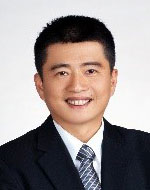 Willie Lin
Willie Lin
IIoT/ iFactory BU Senior Product Manager, Advantech Co., LTD.
Willie Lin is the IIoT/iFactory BU Senior Product Manager of Advantech. Before joining Advantech, he has been working in Digital Transformation of Agile Manufactures over 15 years and successfully reached following goals. Established digital transformation process in labor-intensive production and enhanced automation workflow including robots and digitalization to improve productivity and profit uplift.
 David Huang
David Huang
Manager, Machine Vision department, Techman Robot Inc.
David Huang received his Ph.D degree in Electrical Engineering in 2007. Then he joined Industrial Technology Research Institute (ITRI) as a researcher focusing on computer vision and machine learning. In 2013, he joined Intelligent System Division in Quanta Storage Inc. This team then became Techman Robot Inc. in 2016. Now he leads Machine Vision department of Techman Robot and dedicates on the development of AI and Robotics vision.
 PoWen Tsai
PoWen Tsai
Director of Business Development and Director Presales Engineer Division, Edgecore Networks
Powen has been with Edgecore Networks 7 years building his experience and skill sets in Open Networking Solutions business. He is currently the Director of Business Development and Director Presales Engineer Division. His extensive experience in developing customer-focused solutions allows him to drive business value of open architecture to end users across cloud, telco and enterprise segments.






















